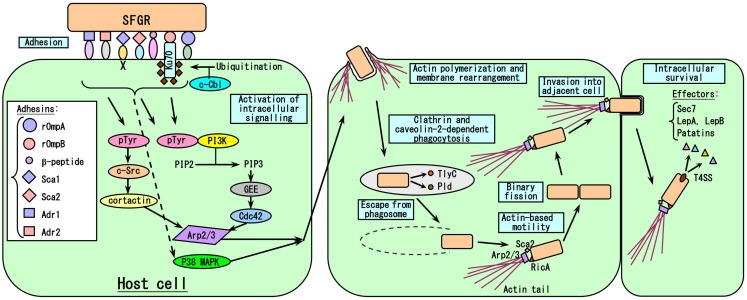Figure 4.
Model of the rickettsia-host cell interactions that occur during the course of infection. The first step in SFGR entry into host cells is the adhesion of rickettsiae to cells due to the binding of many rickettsial adhesins to host cell receptors, followed by the activation of intracellular signaling pathways that induce actin polymerization and membrane rearrangement, causing the attached rickettsiae to be engulfed. Just after clathrin and caveolin-2-dependent phagocytosis, rickettsiae escape from the phagosomes that engulfed them by secreting the phospholipases TlyC and Pld. In the case of SFGR, the surface molecules RicA and Sca2 recruit Arp2/3 to polymerize actin, resulting in the formation of an actin tail, which aids the movement of the bacteria. However, in the case of TGR, R. prowazekii does not have an actin tail, while R. typhi has a very short actin tail. SFGR invade the adjacent cells very early in the course of the infection. Rickettsiae grow within cells by binary fission. The VirB-related T4SS is essential for the intracellular survival of rickettsiae as it allows them to secrete effector molecules.

